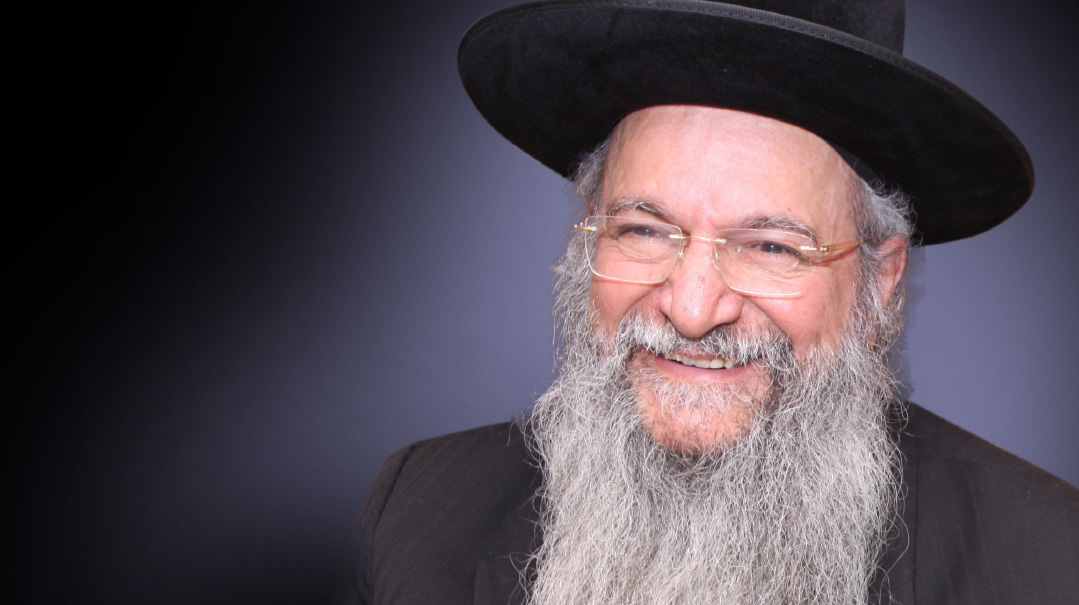No Time to Waste

According to Rav Yaakov Hillel, Hashem is broadcasting a loud and clear message: It’s time to create shalom bayis throughout Klal Yisrael

Photos: Mattis Goldberg
When Mishpacha sat down with HaGaon Rav Yaakov Hillel, Rosh Yeshivat Ahavat Shalom, for what was meant to be a pre-Shavuos talk touching on some of the hot-button issues affecting the Torah community, the cloud of the Meron tragedy was hovering over the nation. Rav Hillel’s guidance is sought by many across Europe, North and South America, and beyond, and so our focal point became the question of a Torah perspective on the tragedy.
A descendant of Chacham Avraham Hillel, av beis din in Baghdad, Rav Hillel was born in India, and then moved to England where he studied in Gateshead Yeshiva. After moving to Israel, he became a close talmid of Rav Shach in Ponevezh.
At the beginning of the 1970s, Rav Hillel founded his yeshivah, Chevrat Ahavat Shalom in Geulah — named after the yeshivah of the 18th-century mekubal Rav Shalom Sharabi — where he’s taught many gedolim from both the Sephardic and Ashkenazi Torah worlds.
The expansion of the Ahavat Shalom institutions has made Rav Hillel one of the preeminent Torah teachers globally, with yeshivos, a kollel network numbering thousands of avreichim, a beis din, a national kiruv organization, and schools under his leadership.
In a no-holds-barred discussion, Rav Hillel spoke decisively about the link between the tragedy, a year of COVID, and the rampant divisions within the Torah world; told of the spur for his own growth as a bochur; and was adamant that even for someone in today’s working world, gadlus isn’t out of reach.
Although we’d planned on discussing Shavuos themes, the Meron disaster is still so fresh and painful, and the significance of the timing — just as the world finally seems to be emerging from a year of debilitating trauma wreaked by COVID — is hard to miss. There’s a sense that the two events are linked; that Hashem is sending a message. Is that true, and if so, what are we meant to take away from this?
Normally, we can’t say exactly why a particular event happens in the world, but in this case, I think that the message of recent events is so pinpointed that we can’t just respond by saying that we need to do teshuvah in general.
Fifteen months ago, at the beginning of COVID, I spoke about what I thought was the message, which is the lack of kavod haTorah — the denigration of rabbanim from different streams of Klal Yisrael, in an unprecedented way. I said that we have to stop the great machlokes that has overtaken the Torah world. And after what happened in Meron, I think that the two are linked. But we have to look at the big picture here to understand:
Klal Yisrael are considered responsible for everything that happens in the world at large, because Hashem created the world for Torah and the Jewish People, and they depend upon one another. In galus, where we’ve been for 2,000 years, Hashem hides Himself from us, but we have to carry on learning Torah and doing mitzvos. If we fall short, Hashem sends us wake-up calls, as has happened throughout our history; all sorts of massacres and pogroms, and recently, the Holocaust.
So when things happen in the world which are mind-boggling and frightening, like COVID, we are meant to awaken and think how to improve. That’s the general approach when things happen to Klal Yisrael.
Oops! We could not locate your form.












